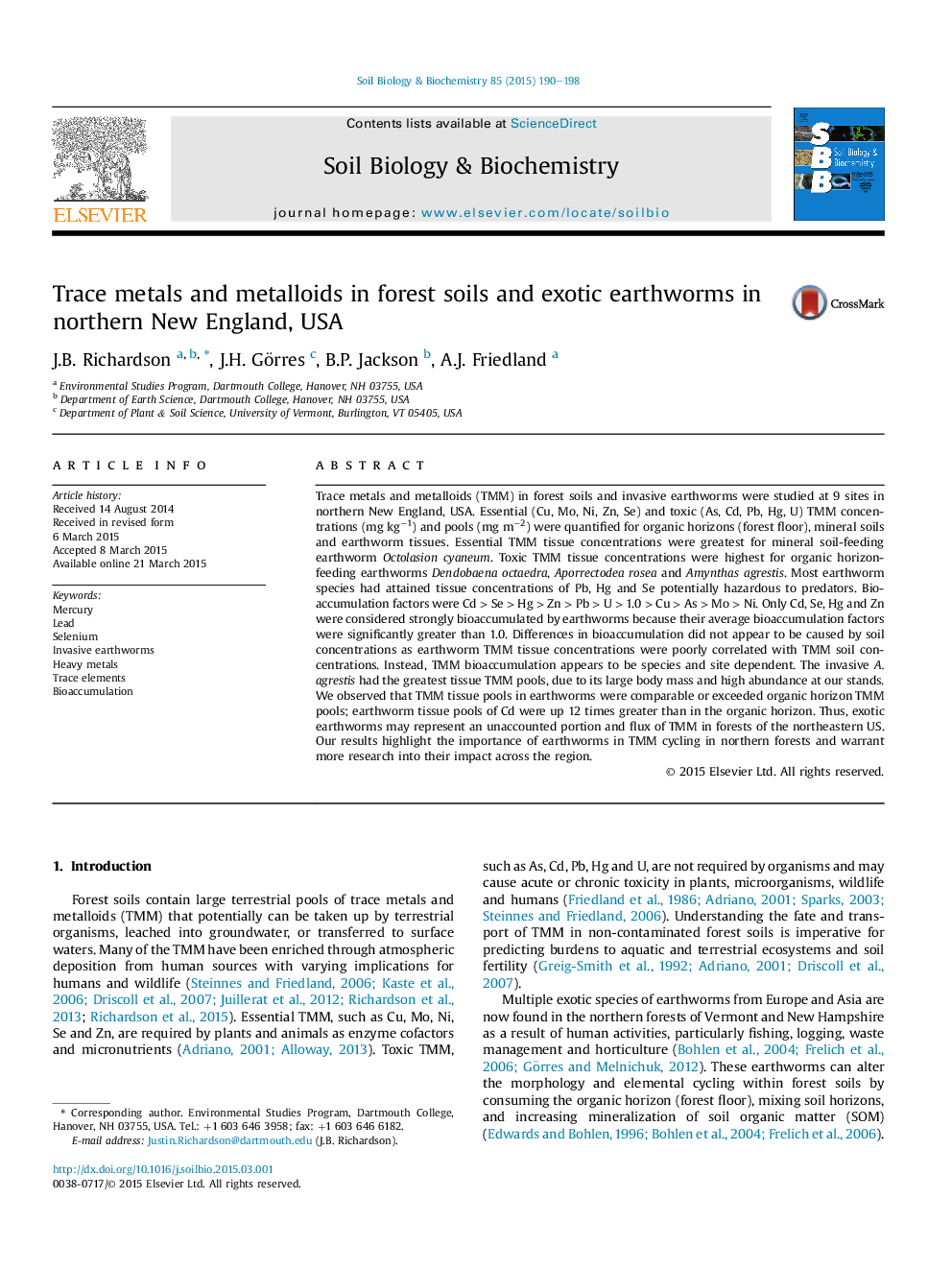| Article ID | Journal | Published Year | Pages | File Type |
|---|---|---|---|---|
| 8364225 | Soil Biology and Biochemistry | 2015 | 9 Pages |
Abstract
Trace metals and metalloids (TMM) in forest soils and invasive earthworms were studied at 9 sites in northern New England, USA. Essential (Cu, Mo, Ni, Zn, Se) and toxic (As, Cd, Pb, Hg, U) TMM concentrations (mg kgâ1) and pools (mg mâ2) were quantified for organic horizons (forest floor), mineral soils and earthworm tissues. Essential TMM tissue concentrations were greatest for mineral soil-feeding earthworm Octolasion cyaneum. Toxic TMM tissue concentrations were highest for organic horizon-feeding earthworms Dendobaena octaedra, Aporrectodea rosea and Amynthas agrestis. Most earthworm species had attained tissue concentrations of Pb, Hg and Se potentially hazardous to predators. Bioaccumulation factors were Cd > Se > Hg > Zn > Pb > U > 1.0 > Cu > As > Mo > Ni. Only Cd, Se, Hg and Zn were considered strongly bioaccumulated by earthworms because their average bioaccumulation factors were significantly greater than 1.0. Differences in bioaccumulation did not appear to be caused by soil concentrations as earthworm TMM tissue concentrations were poorly correlated with TMM soil concentrations. Instead, TMM bioaccumulation appears to be species and site dependent. The invasive A. agrestis had the greatest tissue TMM pools, due to its large body mass and high abundance at our stands. We observed that TMM tissue pools in earthworms were comparable or exceeded organic horizon TMM pools; earthworm tissue pools of Cd were up 12 times greater than in the organic horizon. Thus, exotic earthworms may represent an unaccounted portion and flux of TMM in forests of the northeastern US. Our results highlight the importance of earthworms in TMM cycling in northern forests and warrant more research into their impact across the region.
Related Topics
Life Sciences
Agricultural and Biological Sciences
Soil Science
Authors
J.B. Richardson, J.H. Görres, B.P. Jackson, A.J. Friedland,
